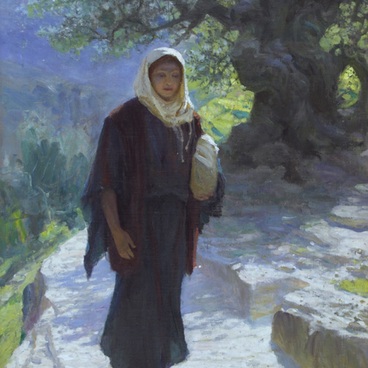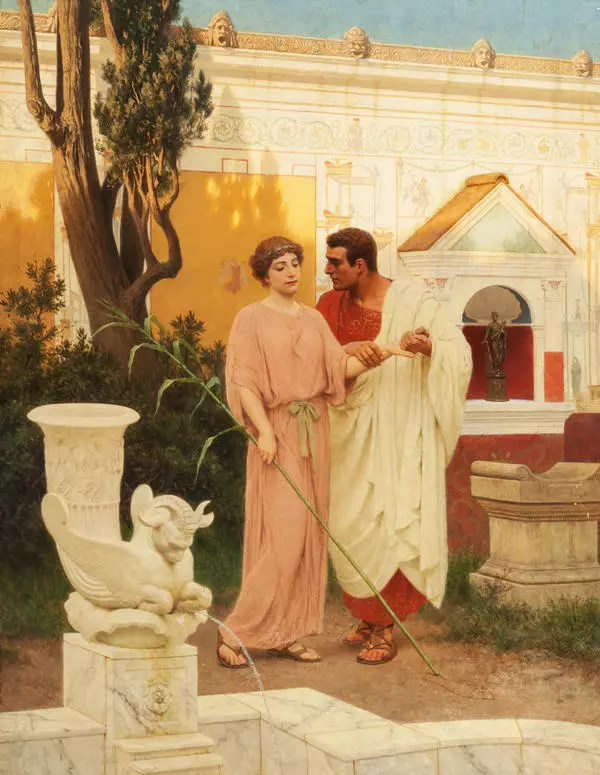At the end of the 19th century, an antique chamber genre started developing within the tradition of academic school of painting. Its leading representative was Stepan Bakalovic. After graduating from the Saint Petersburg Academy of Arts, he settled in Rome for more than sixty years, while also regularly exhibiting in Russia. Bakalovich was famous for his miniature painting on small canvases. His works were distinguished by a thin illusory writing. The exquisitely elegant antique scenes with Pompeii courtyards were highly popular among the wealthy public.
In 1889, the artist received an order from the Grand Duke Konstantin Konstantinovich, who was a talented poet and playwrighter, known under the pseudonym ‘K.R.’ The duke was fond of antiquity and often addressed it. Based on the poem series ‘Hexameters’, written by the Grand Duke in the summer of 1888, Bakalovich Bakalovich created three works: ‘Feeding the doves’, ‘Ode’ and ‘Discus Ball’. The paintings were combined in a triptych and framed in a bronze frame with poetic lines by the Grand Duke, edited by the famous poet and his friend Afanasy Fet. The works adorned the private chambers of Konstantin Konstantinovich in the Marble Palace, where he kept only his most valuable and beloved possessions. They revealed the aesthetic preferences of the Grand Duke, who was convinced that beauty should be combined with artistic truth.
In 1889, the artist received an order from the Grand Duke Konstantin Konstantinovich, who was a talented poet and playwrighter, known under the pseudonym ‘K.R.’ The duke was fond of antiquity and often addressed it. Based on the poem series ‘Hexameters’, written by the Grand Duke in the summer of 1888, Bakalovich Bakalovich created three works: ‘Feeding the doves’, ‘Ode’ and ‘Discus Ball’. The paintings were combined in a triptych and framed in a bronze frame with poetic lines by the Grand Duke, edited by the famous poet and his friend Afanasy Fet. The works adorned the private chambers of Konstantin Konstantinovich in the Marble Palace, where he kept only his most valuable and beloved possessions. They revealed the aesthetic preferences of the Grand Duke, who was convinced that beauty should be combined with artistic truth.






